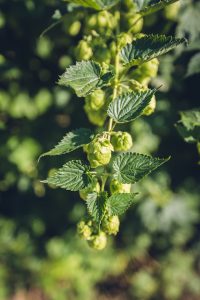Currently, hops are widely harvested at the “Petrovec” plantation in Bački Petrovac, the only place in Serbia where the plant in question is still grown. The plantation covers 12 hectares, and the yield this year is expected to be above average, with more than two and a half tons per hectare. The plantation grows seven varieties of hops, including four American and three domestic varieties. Among them, the autochthonous variety backa, which has been cultivated in this region for two centuries, stands out.

This year, hops coped extremely well with dry conditions and high temperatures, which makes it a more resistant plant compared to other agricultural crops. There is a satisfactory number of cones on the hop stems, and when they open, a significant amount of gold dust can be observed. This powder contains alpha acids, a key ingredient for the brewing industry. Although the exact alpha acid percentage will not be known until the end of the harvest and analysis in the Czech Republic, the high quality of this year’s crop is expected.
Karol Maljah, a salesman at the plantation, points out that the entire hop crop will be exported to countries such as Germany, Italy, Poland and the Russian Federation. Hops will be used mainly in the brewing and pharmaceutical industries, while a smaller part will be intended for teas in the food industry. The price of hops varies from six to twenty euros per kilogram, depending on the quantity sold and the method of packaging. Also, the price depends on whether the sale takes place on the basis of long-term contracts or on the free market.


Hops are grown as much as the market demands
In the past, hops were grown on 2,000 hectares in Bački Petrovac, while in Vojvodina before the Second World War there were around 8,000 hectares of hops. Today, hops are grown on a much smaller area, but the “Petrovec” plantation plans to expand by an additional 12 hectares.
The pillars for the new plantings have already been installed, which represents one of the most important investments in raising a hop farm. However, expansion is not carried out hastily, but in accordance with market demand.


Building a hop farm requires significant investment. It is necessary to invest about 30,000 euros for a hectare of hops. Seedlings alone cost from 10,000 to 12,000 euros per hectare, given that one seedling costs two euros, and 5,000–6,000 seedlings per hectare are needed.
In addition to investing in seedlings, the hop grower must also have appropriate machinery for harvesting, processing and storing the crop. This is precisely the main reason why hops are no longer grown in the fields of Vojvodina, despite its profitability and longevity. Namely, once planted hops can last up to 15 years, with regular maintenance and application of standard agrotechnical measures.
Source: Diary
Source: boljazemlja.com


